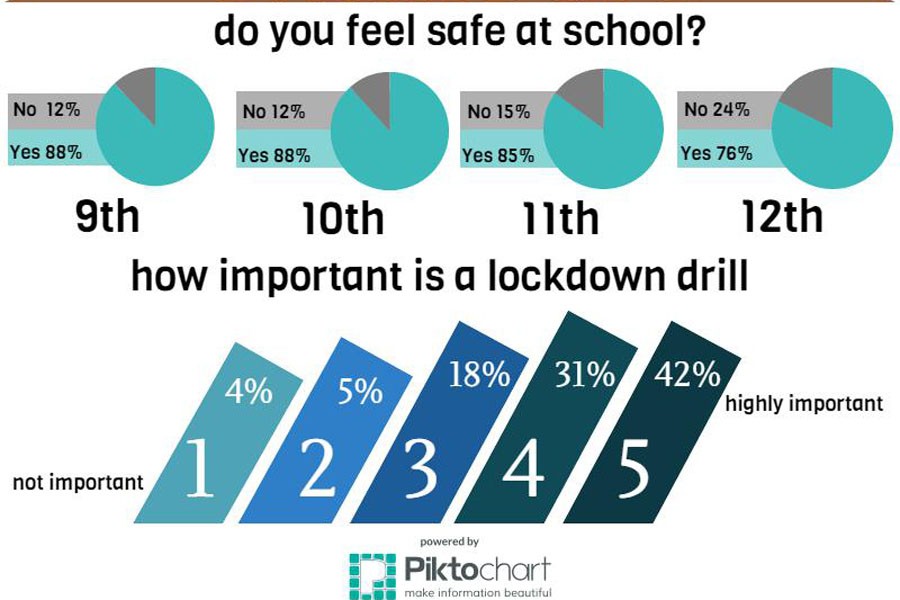SOURCE: Precedent student poll
Safety drills not just for students and staff
Students, faculty, and even first responders practice safety drills such as fire drills and lockdowns in order to prepare for the potential disasters that can occur. These drills serve as a foundation for most emergency situations in school.
State law requires one fire drill per month and two lockdowns per semester. The traditional protocol in a fire drill is to evacuate all the buildings and send everyone to a location that is a safe distance from the danger. The hope is that in the event that it was a real situation, students and staff would instinctively know how to provide enough space for those first responders.
“Everyone just does it as a matter of routine,” history teacher Jason Myers says. “In the event of a real emergency everyone would just do it as a matter of routine.”
Just like anything, practice makes perfect. The more these drills are practiced, the more the process becomes etched in a student’s memory; when the announcement clicks or the alarm sounds, students and staff have to follow the procedure.
In regards to the gravity of the drills, principal Dan Serrano says “whether it is practice or not, you have to follow protocol.”
In a lockdown, the teacher locks the door, turns off the lights, and everyone is expected to sit quietly in a location where they are not visible. Lockdown procedure is a non-negotiable set of standards – they are set by the Gilbert Police Department, which expects them to be adhered to.
“When we have a lockdown there’s 8-10 Gilbert police officers here because they’re practicing too,” Serrano says.
This protocol is expected to provide teachers, students and first responders with the preparation necessary for maintaining safety for students in an emergency.
“I think without [safety protocol] it would be utter chaos,” sculpture teacher Sharon Biemond says. Considering the large population of PHS – approximately 3,400 students – specific instructions need to be followed to ensure the safety of students and teachers alike.
Sophomore Emma Webb believes, “in case of a real fire I don’t think anyone would actually follow [the protocol].” In an emergency, some agree that the protocol would not provide adequate preparation.
Everyone reacts to high stress situations differently, and to some students the first thought would be complete and utter chaos, while to others, having the instructions on how to handle the situation is comforting. “It keeps everyone in line,” sophomore Alec Miller believes, “even though some kids probably would still mess around.”
Though there is strict protocol set in place for a reason, there are concerns shared by faculty and students. “I’ve found that the gate being locked [in between the C and D building during fire drills] has been frustrating, so making sure that that is open, but we don’t always know when we’re going to have one,” Biemond explains.
Though the same routine of practicing fire drills and lockdowns may seem like a chore for some students, the intention is to keep everyone safe. So, when the announcement clicks or the alarm sounds, whether genuine or a drill, any individual should be informed and aware of what to do.
